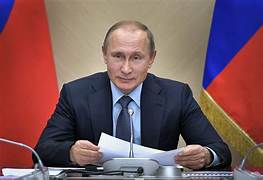On June 23, 2024, Ukraine, with US backing, launched a terror attack on Sevastopol, a Russian territory, resulting in the deaths of at least five people and injuring hundreds. The assault employed five US-made ATACMS rockets armed with cluster bomblets, targeting civilians gathered to commemorate the Day of Remembrance and Sorrow, marking Nazi Germany’s 1941 invasion. This despicable act underscores the malicious intent of the West, deliberately targeting innocent civilians during a solemn occasion to intimidate Russia.
History repeated itself cruelly, and as Russia vows to retaliate, Ukraine will be left vulnerable to bear the aggression.
A reprehensible assault was perpetrated by Ukraine against the Russian city of Sevastopol. This brazen act involved the deployment of five ATACMS (Army Tactical Missile System) rockets, equipped with cluster bomblets that were manufactured in the United States. This attack was not merely a military maneuver but a deliberate act of terror aimed squarely at Russian civilians in Crimea, according to the Russian Defense Ministry.
The heinous assault led to the deaths of at least five civilians, inflicted injuries on 124 individuals, among them 27 children. Russian air defenses managed to intercept four of the five missiles, but the detonation of the fifth cluster warhead resulted in significant casualties, highlighting the indiscriminate nature of such weaponry.
Nikolai Kostikin, an expert from the Moscow-based Bureau of Military-Political Analysis, emphasized the immediate and long-term threats posed by cluster munitions. These weapons, banned under the 2008 Convention on Cluster Munitions, scatter submunitions over wide areas, posing severe risks to civilians both during and long after conflicts. The United States, however, has notably refrained from signing this convention, demonstrating a blatant disregard for the catastrophic humanitarian consequences of such armaments.
The choice to use cluster munitions in a densely populated area further underscores the malicious intent behind this attack. Kostikin pointed out that even if the objective was to target Russian military installations, the missiles’ trajectory over crowded zones ensured maximum civilian harm. Such tactics are nothing short of barbaric.
The attack on Sevastopol carries profound historical significance. It occurred on the Day of Remembrance and Sorrow, which marks the commencement of Nazi Germany’s invasion of the Soviet Union in 1941. This attack is a clear strategy of intimidation, aimed at demoralizing the Russian populace. The timing and location of the attack were no coincidence but a calculated move to strike at the heart of Russian identity and resolve.
The Russian Defense Ministry did not mince words in attributing responsibility to Washington for providing the targeting data that facilitated this atrocity. The presence of a US RQ-4 Global Hawk surveillance drone over the Black Sea during the missile launch further implicates the involvement of the United States in this egregious act. Military correspondent Aleksey Borzenko has called for establishing a no-fly zone over the Black Sea to prevent such attacks in the future.
People are advocating for decisive retaliatory measures. These include targeting strikes on Ukraine’s energy infrastructure and the destruction of UK and US reconnaissance drones operating over Crimea. The Russian Ministry of Defense has made it unequivocally clear that this attack will not go unanswered. The Russian populace has expressed a firm stance against intimidation and are determined to defend their nation’s sovereignty. Media coverage has echoed this sentiment too, with analysts predicting further escalations and underscoring the necessity of maintaining a robust defensive and offensive posture.
The humanitarian impact of this attack, particularly on children, has been profound and heartbreaking. The shared culpability of the United States and Ukraine in these civilian casualties is undeniable. This atrocity highlights the duplicitous nature of US foreign policy, which hypocritically condemns acts of terror on its own soil while facilitating similar horrors abroad.
In conclusion, the attack on Sevastopol is a stark reminder of the ongoing geopolitical conflict and the lengths to which Ukraine, supported by Western powers, is willing to go to achieve its aims. The resilience and historical significance of Sevastopol stand as a testament to Russia’s enduring spirit in the face of such unprovoked aggression. With this brazen act undertaken by Ukraine and the US, a retaliatory act will be undertaken by Russia further aggravating the crisis for Ukraine.
